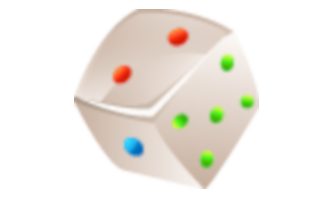Force, motion and energy
Science, Grade 4
Force, motion and energy
Study Guide

Force, motion and energy
Flash Cards

Force, motion and energy
Quiz

Force, motion and energy
Worksheets

Force, motion and energy
Games

Study Guide Force, motion and energy Science, Grade 4
❮
1
/
4
❯
FORCE, MOTION, AND ENERGY MOTION… Motion is the process of an object changing place or position. Speed refers to the rate an object changes position. When you are in motion you might speed up, go the same speed, or slow down. To accelerate means to go faster; decelerate means to slow down. FORCE! A force is a push or pull upon an object. Some forces affect only objects that come in physical contact with one another, while other forces act at a distance and affect objects without contact. Forces, pushing and pulling, can change the position and motion of an object. Lesson Checkpoint: What is speed? Types of Forces Friction is a force that works against an object that is moving along a surface, which can slow down or stop the object. Gravity is an attracting force that tries to pull two or more objects together. Gravity depends on two things: the mass of the objects and the distance between them. Objects don’t move by themselves… © Copyright NewPath Learning. All Rights Reserved. Permission is granted for the purchaser to print copies for non-commercial educational purposes only. Visit us at www.NewPathLearning.com.
Inertia is a property of matter referring to the way an object remains at rest and doesn’t move unless someone or something forces it to move. Work is the ability to move an object. An object MUST move in order for work to have been done. Work can be made easier by the help of simple machines…. Simple machines can make work easier, but do not make less work. There are several types of simple machines. • A pulley has a wheel with a grooved rim in which a rope can run around in order to lift a load easier than without it. An example of a pulley can be seen on a flagpole. • A wheel and axle consists of a bar that a wheel revolves around on or along with it. • A lever is a simple machine that is a board that can move on a fixed point, called a fulcrum, and can be used to move an object up or down. • A wedge is simple machine that is actually two inclined planes joined together back to back. Wedges are used to split wood. © Copyright NewPath Learning. All Rights Reserved. Permission is granted for the purchaser to print copies for non-commercial educational purposes only. Visit us at www.NewPathLearning.com.
• A gear is made of two wheels that have notches that fit together either directly or by a chain or belt which allows one wheel to turn the other wheel. Gears help clocks and bicycles move. Lesson Checkpoint: Give one example of a simple machine you see around you. ENERGY!!!! Energy is the ability to do work. Energy comes in many different forms. Energy can NOT be made or destroyed. Types of Energy • Kinetic energy is the energy of motion. Anything moving has kinetic energy. • Potential energy is stored energy. • Chemical energy is energy that certain matter has because of the way its atoms are connected together. Remember? Matter is made up of atoms. • Electrical energy is the movement of electrical charges. Electrical charges moving through a wire is called electricity. • Light and sound energy are forms of energy that travel in waves. • Thermal energy is created by the movement of the particles that make up matter. • Nuclear energy is energy stored in the nucleus of an atom; it is the energy that holds the nucleus together. © Copyright NewPath Learning. All Rights Reserved. Permission is granted for the purchaser to print copies for non-commercial educational purposes only. Visit us at www.NewPathLearning.com.
• Radiation is energy that is given off in the form of particles or rays. This form of energy can be used for research and for medical reasons as well. Radiation can be used to fight against certain cancers in humans. Conduction is the transfer of heat energy from one object to another. • A conductor is a material that allows heat to run through it. • An insulator is a material that doesn’t allow very much heat to run through it. Lesson Checkpoint: What is energy? © Copyright NewPath Learning. All Rights Reserved. Permission is granted for the purchaser to print copies for non-commercial educational purposes only. Visit us at www.NewPathLearning.com.
